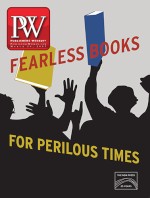Children’s Fun Publishing is a joint venture between Egmont Group and Posts & Telecommunications Press, so the wealth of foreign works in its 6,000-title catalogue is not surprising. But what is most unique is the company’s specialization in edutainment materials in four categories—comics, picture books, games/activity kits, and children’s literature.
“Fun is literally our middle name, and we have been delivering that to children of all ages since we started 23 years ago,” says Ao Ran, general manager of Children’s Fun Publishing. In 1993, the launch of the Chinese edition of Mickey Mouse magazine kick-started the company’s publishing program. “There was no such children’s magazine in China then, and ours became a bridge linking Chinese kids with their Western counterparts, providing them with the best classical stories and characters to love and learn from,” Ao says.
Since then, products based on licensed characters—including Caillou, Miffy, Mr. Men and Little Miss, My Little Pony, Thomas & Friends, Tiger Team, and Winnie the Pooh—have cemented CFP’s reputation and foothold in the Chinese children’s book market.
In all, Ao and his team have collaborated with more than 30 international companies and brands including BBC, Disney, Hasbro, Mattel, Rovio, and Sanrio. “The diverse range of companies and products that we work with represents our goal of rummelig, a Danish word that roughly translates to open,” adds Ao, pointing out that “the company’s publications are intended to inspire Chinese children to adopt a much more open and inclusive attitude toward the world around them.”
Among the CFP partnerships, the longest and most extensive is with Disney, which gives the team in-depth understanding on the product, marketing and localization needs. In total, CFP has sold more than CNY 1 billion ($145 million) worth of Disney titles in China. A special 2007 edition, 80 Winnie the Pooh Stories for Personal Development, is the company’s #3 bestselling title, at 530,000 sets. Last June, to commemorate the opening of the Shanghai Disney Resort, Ao and his team released a limited edition boxed set of 17 Disney titles; 9,800 sets sold within a day.
The importance of translated titles aside, 30% of CFP’s catalogue are original works, including the bestselling comic series The Legend of Nezha and Pleasant Goat and Big Big Wolf, both of which have firmly established the company’s brand and reputation in the minds of Chinese parents, teachers, and children. Sales of Pleasant Goat have exceeded 20 million copies. In the children’s literature segment, there are two big titles: Shen Shixi’s Wolf Queen, which has chalked up sales of 620,000 copies since 2013, and The Schakal Wolf, which has been translated into eight languages including English, German, Polish, and Russian.
More large-scale original works are being added to CFP’s catalogue. Last May, the team launched the country’s first graded Chinese-language reading series for ages 4 to 8; all 29 titles are based on Disney stories. “China is almost a virgin territory when it comes to such graded readers,” Ao says. “We have to learn about the required vocabulary, pedagogy, and context; do our homework using popular English-graded readers as models; understand exactly what children need; and work with experts and scholars to come up with the full program. This process actually reveals the gaps—and opportunities—within the children’s publishing market that need to be addressed.” CFP recently introduced Japanese picture-book series The Bear’s School in an effort to make reading (and schooling) more fun, less stressful, and appealing to children.
Ao adds his company “remains focused on being a link between the East and the West, publishing high-quality, age-appropriate, fun materials to help children with their development and reading progress.” He adds, “Our focus is on grabbing their interest with the right content, and by doing so, to get them to start reading and cultivate good reading habits that will endure throughout their lives.”
To further understand what parents, teachers, students—and even grandparents—need in terms of content, Ao finds social media to be a great resource. “Topic- and interest-specific social communities—and there are a lot out there—are great conduits not just for direct selling but also in providing information and tips to help us tweak our publishing program,” he says. “Their exchanges, often reflecting societal concerns and market shifts, are very important to the growth and relevance of any publisher in this modern and competitive marketplace.”



 Volume 264
Issue 12
03/20/2017
Volume 264
Issue 12
03/20/2017





